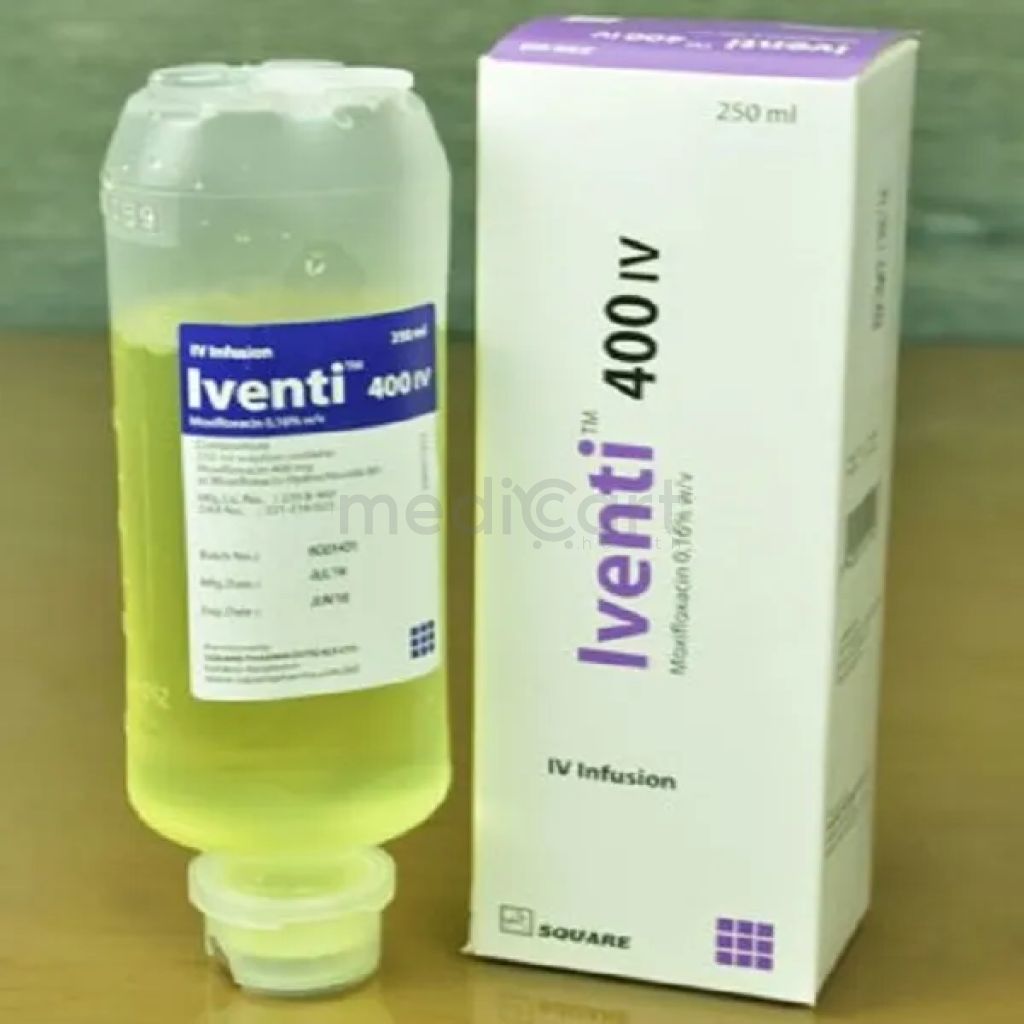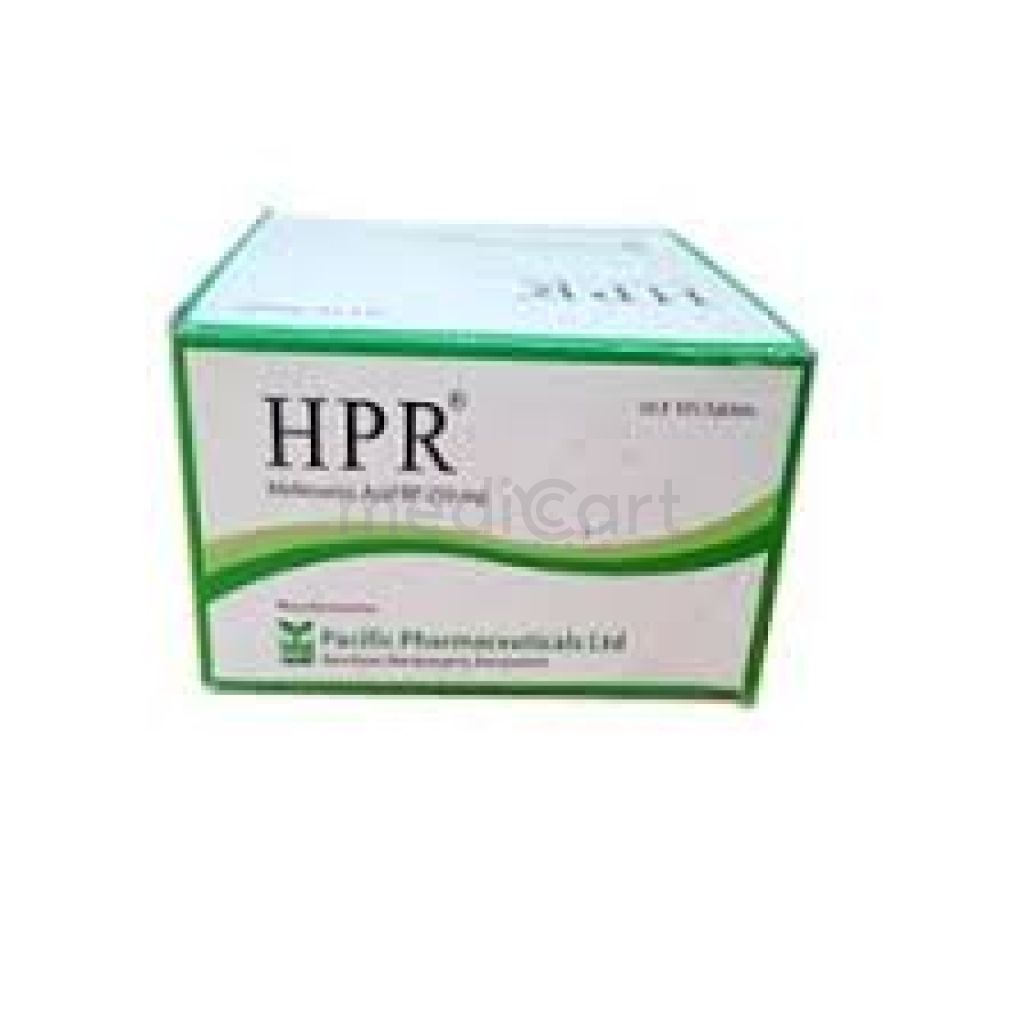

Iventi 250ml
Infusion
Pack Size :
1 Bottle x 1 Bottle
Generics :
Moxifloxacin IV
Manufacturer :
Square Pharmaceuticals Ltd.
Best Price *
TK
350.00
* Delivery will be done in Dhaka city only.
Alternative Product
More Information About - Iventi 250ml
Description
Generic Name
Moxifloxacin IVPrecaution
Maintain adequate fluid intake; Patient w/ previous tendon disorders (e.g. rheumatoid arthritis), significant bradycardia or acute myocardial ischaemia, heart failure w/ reduced LVEF, known history of symptomatic arrhythmias, known or suspected CNS disorders (e.g. severe cerebral arteriosclerosis, epilepsy) or other risk factors that predispose to seizures; diabetes. Kidney, heart or lung transplant recipients. Hepatic impairment. Pregnancy and lactation. Patient Counselling This drug may cause dizziness and lightheadedness, if affected do not drive or operate machinery. Rest and refrain from doing strenuous physical activity as it may increase risk of tendon rupture. Avoid exposure to sunlight or artificial UV light (e.g. tanning beds, UVA/UVB treatment) and use protective measures (e.g. sunscreen, wear loose-fitting clothes) if staying outdoors is necessary during therapy. Monitoring Parameters Monitor WBC and signs of infection.Indication
Community Acquired Pneumonia, Acute Bacterial Exacerbation of Chronic Bronchitis, Acute Bacterial Sinusitis, Complicated Intra-Abdominal Infection, Uncomplicated Skin and Skin Structure Infections, Complicated Skin and Skin Structure Infections, Typhoid Fever.Contra Indication
Known hypersensitivity to moxifloxacin, other quinolones. Patients w/ known prolongation of QT interval, uncorrected hypokalaemia, myasthenia gravis. Concurrent use of class Ia (e.g.quinidine, procainamide, class III (e.g. amiodarone, sotalol) antiarrhythmic drugs or w/ other drugs that prolong QT interval (e.g. erythromycin, TCAs, antipsychotic agents).Dose
N/ASide Effect
1-10% Nausea (7%),Diarrhea (6%),Dizziness (3%),Decreased amylase (2%),Decreased basophils, eosinophils, hemoglobin, prothrombin time, red blood cells, neutrophils (2%),Decreased serum glucose (2%),Increased serum chloride (2%),Increased serum ionized calcium (2%),Immune hypersensitivity reaction (0.1-2%),Prolonged QT interval (0.1-2%) <1% Acute renal failure,Agranulocytosis,Anaphylactoid reaction,Aplastic anemia,Extrinsic allergic alveolitis,Hemolytic anemia,Hepatic failure,Hepatic necrosis,Hepatitis,Pancytopenia,Seizure,Serum sickness due to drug,Stevens-Johnson syndrome,Tendon rupture, tendinitis,Thrombocytopenia,Torsades de pointes,Toxic epidermal necrolysisPregnancy Category
Name : Not Classified
Description
FDA has not yet classified the drug into a specified pregnancy category.Mode of Action
Moxifloxacin inhibits the topoisomerase II (DNA gyrase) and topoisomerase IV required for bacterial DNA replication, transcription, repair and recombination.Interaction
Additive effect on QT interval prolongation w/ other drugs that prolong QT interval (e.g. erythromycin, TCAs, antipsychotic agents). Decreased absorption and bioavailability w/ Al- or Mg-containing antacids, or Fe or Zn preparations. Concomitant use of corticosteroids increases the risk of severe tendon disorders esp in elderly (>60 yr). Decreased absorption w/ sucralfate or didanosine. Potentially Fatal: Concurrent use of class Ia (e.g. quinidine, procainamide) or III (e.g. amiodarone, sotalol) antiarrhythmic drugs or w/ other drugs that prolong QT interval (e.g. erythromycin, TCAs, antipsychotic agents) may cause additive effect on QT interval prolongation.Pregnancy Category Note
Pregnancy There are no available human data establishing a drug associated risk; however, when moxifloxacin was administered to rats during pregnancy and throughout lactation at doses associated with maternal toxicity, decreased neonatal body weights, increased incidence of skeletal variations (rib and vertebra combined), and increased fetal loss were observed Advise pregnant women of potential risk to fetus Lactation Not known if moxifloxacin is present in human milk Based on animal studies in rats, moxifloxacin may be excreted in human milk Developmental and health benefits of breastfeeding should be considered along with mother?s clinical need for therapy and any potential adverse effects on the breastfed child from drug or from the underlying maternal conditionAdult Dose
Moxifloxacin 400 mg IV infusion can be administered intravenously once daily for 5-21 days, depending on the condition. The duration of therapy depends on the type of infection as described bellow- Intravenous Acute bacterial sinusitis Adult: 400 mg once daily infused over 60 min for 10 days. Acute bacterial exacerbation of chronic bronchitis Adult: 400 mg once daily infused over 60 min for 5 days. Community-acquired pneumonia Adult: 400 mg once daily infused over 60 min for 7-14 days. Skin and skin structure infections Adult: Complicated: 400 mg once daily for 7-21 days; uncomplicated: 400 mg once daily for 7 days. Doses to be infused over 60 min. Intra-abdominal infections Adult: 400 mg once daily infused over 60 min for 5-14 days. May change to oral therapy when clinically appropriate. Elderly: No adjustment of dosage is required in the elderly.Child Dose
<18 years: Safety and efficacy not establishedRenal Dose
N/AAdministration
IV Preparation No further dilution of infusion solution is necessary IV Administration Infuse over 1 hourDisclaimer
The information provided herein are for informational purposes only and not intended to be a substitute for professional medical advice, diagnosis, or treatment. Please note that this information should not be treated as a replacement for physical medical consultation or advice. Great effort has been placed to provide accurate and comprehensive data. However, Medicart along with its authors and editors make no representations or warranties and specifically disclaim all liability for any medical information provided on the site. The absence of any information and/or warning to any drug shall not be considered and assumed as an implied assurance of the Company.





